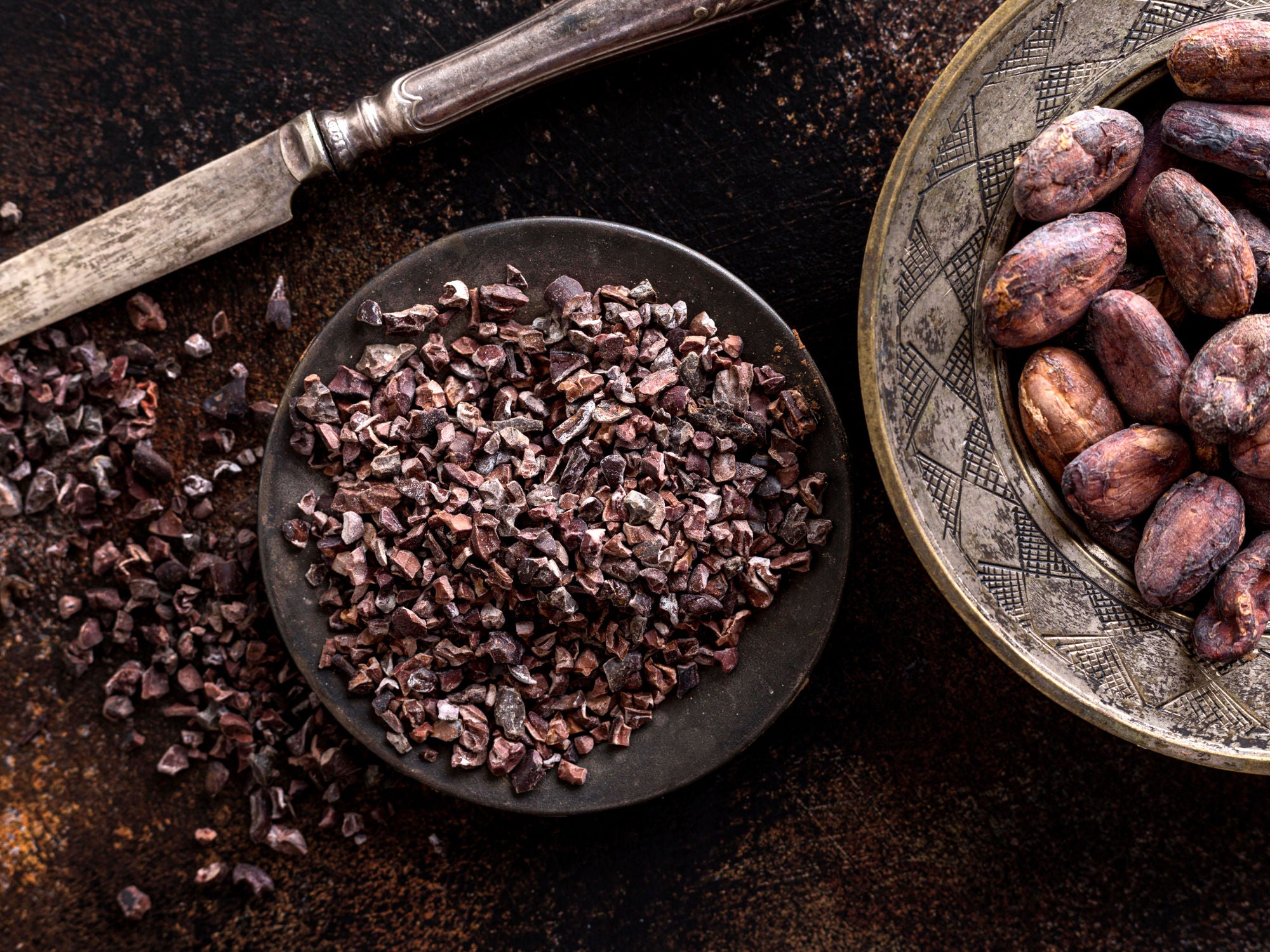Your basket is empty
Already have an account? Log in to check out faster.
Already have an account? Log in to check out faster.

Cacao nibs are the first product obtained from the processing of cacao. These are cacao beans that, after processing, are broken into small pieces. Not being mixed with other ingredients, the nibs retain all the nutritional characteristics of the beans.
Even better if it's raw cacao nibs, whose long and complex processing involves production methods aimed at preserving the precious nutritional qualities of cacao. Let's explore in detail how cacao nibs are processed, why they are beneficial, and how to consume them.
The cacao plant, Theobroma cacao, is a tropical tree whose natural habitat is in the lower layer of the rainforest. All cacao species need high temperatures and humidity, intense rainfall, and a shady environment.
A cacao tree has an average lifespan of about 25 years. Besides plant diseases, the difficulties in cultivation include the presence of animals and fruit thieves.
It takes about 160 days for the fruit to mature, and there is no spontaneous opening mechanism for the fruits. In nature, monkeys, who love cacao pulp, open the fruit to eat it and disperse the seeds on the ground.
Once pollinated, the flower produces the fruit in about 5-6 months. A cacao tree yields an average of 1 kg of cacao per year, which is about 15-20 fruits.
The cacao fruit is oblong and grows directly on the trunk and branches. It contains 20 to 50 beans, about 3 cm long and 1 cm thick.
There is no specific ripening season; the fruits are harvested only when mature. Consequently, a lot of experience is needed to recognize when the fruit is ripe.
The harvest is done manually, with machetes when the fruits are reachable, or with a long stick with a sharp blade if they are high up.
Each fruit has a hard shell that must be opened with a sharp machete strike. The opening process is also very important because care must be taken not to damage the beans.
Once the fruits are harvested and opened, the beans are separated from the cluster they are attached to. They are completely covered in a white, gelatinous substance, which initiates fermentation.
This is a biochemical process, similar to other fruit fermentation processes, like grapes. The beans are placed in large containers, called fermentation boxes, located in dark, well-ventilated rooms.
This way, all climatic conditions are reproduced to allow a spontaneous fermentation process: heat, humidity, yeasts, sugars (from the white pulp), acidity, and little oxygen.
Fermentation is certainly the most important processing phase, in which all the cacao aromas and aroma precursors develop, which will become real aromas during the subsequent processing phases.
After fermentation, the cacao is sun-dried to halt the fermentation process abruptly. This slow and natural drying reduces humidity and evaporates acetic acid, which could negatively affect the cacao's flavor.
The drying lasts about 3-4 days and is carried out naturally. The beans are spread out on tarps and exposed to the sun.
The beans are cleaned using a machine made up of cylinders, sieves, and brushes, through which they pass to remove dust, small stones, and other impurities.
Finally, they are sorted by size and are ready to be processed into nibs or ground into cacao powder.
At this point, the cacao beans are stripped of their shells and finally crushed. This results in cacao nibs, which are the first product of cacao processing.
Nutritionally and aromatically, the nibs are very pure and retain all the characteristics of the beans. They contain numerous beneficial substances and all those nuances that make cacao truly special.
Cacao nibs have great beneficial properties for our bodies. They contain a large amount of antioxidants, such as polyphenols, which can protect against degenerative processes and help promote blood circulation.
In general, cacao can provide feelings of well-being, alleviate depressive states, improve and support mood through the production of endorphins.
With cacao, you make chocolate... and who doesn't love chocolate and immediately feel satisfied after tasting a piece? And in this period of Easter eggs, the attention to the quality of this food is even higher. Our organic eggs are proof of that!
Finally, cacao can increase energy and help memory. Our NaturalBio Cacao Nibs also contain valuable minerals such as phosphorus and magnesium and, percentage-wise, a good amount of protein compared to other types of cacao on the market.
To fully enjoy all the beneficial properties of cacao, you can consume the nibs raw, as a tasty daily snack instead of dried fruit. They are widely used by athletes as they provide a burst of energy for training.
You can consume them raw, in beverages or smoothies, or add them to your favorite milk or yogurt. For a rich and nutritious breakfast, you can mix the nibs into an oatmeal porridge or any plant-based drink like soy, rice, or almond milk.
For a balanced sweet-bitter taste, you can pair cacao nibs with fresh fruit, honey, and they are ideal for adding to muesli. To take advantage of the crunchy texture of the nibs, you can use them as a topping for ice cream and mousse or simply sprinkle them over cakes or spoon desserts.
3 comments
What are the health benefits of granella di cacao?Greeting : Telkom University
How is granella di cacao made?Visit us Telkom University
What is granella di cacao?Regard Telkom University